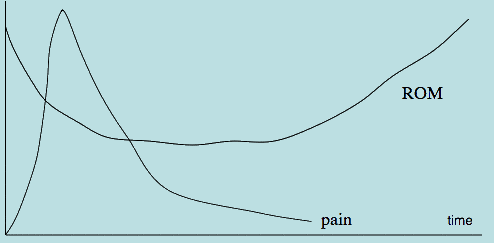Adhesive capsulitis, also known as 'frozen shoulder' or '五十肩', is a very common condition, affecting people in their 40s and 50s. Some patients report a history of injury, in others it occurs spontaneously. It seems to occur more frequently in people who have diabetes. Sometimes, no cause for it can be determined.
The condition affects the shoulder joint capsule, resulting initially in an irritated, inflamed and painful shoulder joint. In the early phase, patients often report severe burning pain deep in the shoulder, which affects their sleep. The pain often can be severe even on small sudden movements of the shoulder. In fact, during this phase, the shoulder is not frozen at all, its "burning" with inflammation.
The result of the painful inflammatory phase, is a stiffening and tightening of the capsule of the shoulder, and this results in a loss of the range of motion, and stiffness. Patients realise they can't lift the arm up as high, can't reach away to pick things up, and can't reach back to scratch their back. Even reaching for a wallet in the back trouser pocket may be difficult.

For most people, even if they don't seek medical treatment, the pain (from inflammation) and the stiffness settle down on their own spontaneously. Eventually almost all patients regain all of their range of motion. The problem is that the process takes about 6 months for some patients, but for many, the recovery process could drag up to 18-24 months!
Treatment of adhesive capsulitis involves treating both the inflammation (and pain), and the stiffness. In the early painful inflamed phase, regular anti-inflammatory tablets should be taken to try to calm down the inflammation in the shoulder joint. Often, a small injection of steroid directly into the shoulder joint is very effective, and many patients have little or no remaining pain 3-4 weeks after this injection.
Treatment of the stiffness is mainly physiotherapy and a home exercise program. During the painful phase, physiotherapy may be very unpleasant and difficult, and as such, patients are typically referred for physiotherapy only when the painful phase is under control. Patients need to learn and then carry out a daily home exercise program of stretching to regain range of motion.
With appropriate treatment, we hope to reduce the time it takes to return the shoulder to normal. Recovery is still a slow process, and often may take 3 to 6 months. Occasionally, patients remain stiff despite intensive physiotherapy and home exercise. A very small group of patients eventually are offered surgery to release the tight shoulder tissues, this can be done arthroscopically ("keyhole").
